
If you tell any Colombian that you are going to travel to the Coffee Region, the immediate response is always a loving sigh. The rolling green hills of coffee and banana trees set against the jagged silhouette of the Central Andes Mountains is truly the heart, and most beloved part, of Colombia. I thought for sure it was a little over-hyped. It’s not.
It’s lovely.

Caldas, Risaralda and Quindío and is centered south of Medellín around the three medium-sized cities of
Manizales, Pereira and Armenia
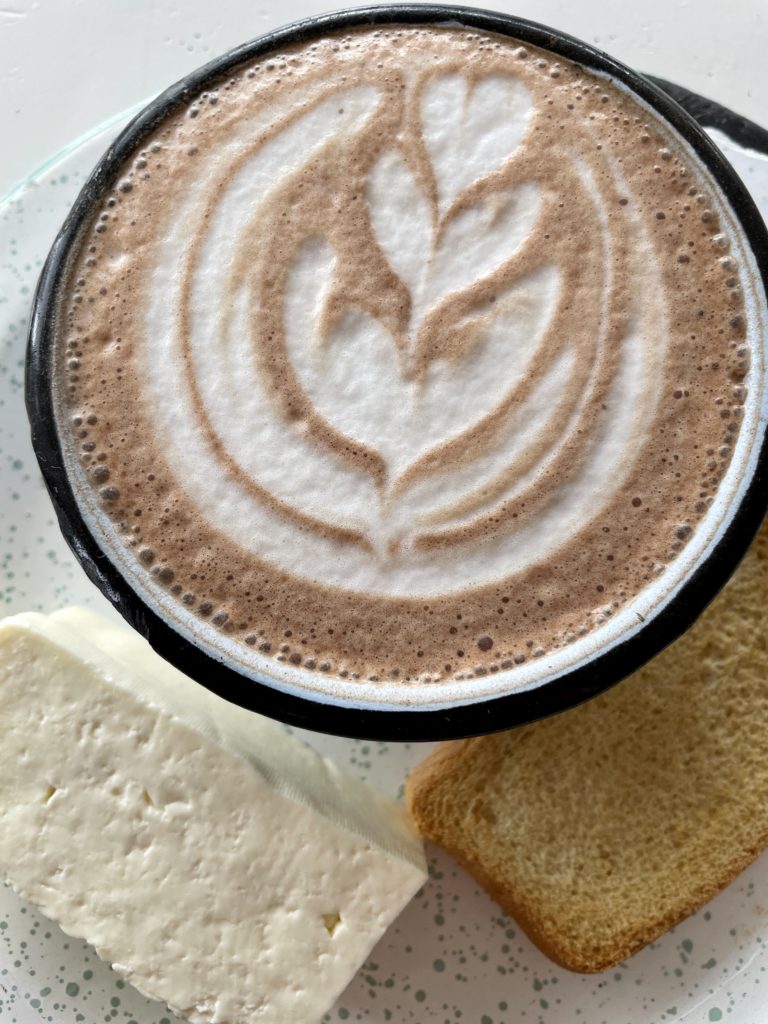
Colombia is the third largest coffee producer in the world, behind Brazil and Vietnam, and it is the only country that produces 100% Arabica beans, giving it a rich, smooth taste. Coffee plants thrive in Colombia because of the volcanic soils and consistent rains at altitudes of 4,000-6,000 feet (1,200-1,800 meters). Since Colombia is so large, coffee is cultivated in many different mountainous regions of the country – each specializing in their own distinct flavor. But the vast majority of Colombian coffee is, and always has been, produced in the Eje Cafetero, or “the Coffee Region”. In fact, this region has preserved so much of its historic authenticity and “coffee culture” that it was declared an UNESCO World Heritage Site in 2011.
The coffee region really is all about coffee and there’s a cafe to serve up its finest about every ten feet. But the coffee region is also famous for the kindness of its people, the pride in their culture, their artistry, and the colorful architecture of their communities. Won’t you take a stroll through town with me?
























I traveled around the small towns of Colombia’s Coffee Region for about five weeks. I couldn’t stop taking pictures of the colorful buildings, beautiful doorways, charming streets, murals and parks. These photos were taken in the small traditional communities of Salento, Filandia, Pijao, Salamina, Jardín and Jericó.

In Antioquia, transportation by colorful bus is the norm to get from town to town. My friend Scott (from Portland, Oregon) and I took this bus on a 34-km mountain muddy road which ended up being a 3 1/2 hour party of bopping, bumping and jostling along. Neighbors getting to an appointment, school kids coming home from school, weekenders visiting family in the next town, plus two mattresses, a bunch of bales of hay and lots of construction supplies filled the bus. As we rode through tunnels of coffee and banana leaves, dodged pot-holes and laughed away the dripping rain, Colombian Vallenato blared from the speakers and almost everyone sang along.



So, the culture of the Coffee Region is alive and strong. Now, let’s talk about the product.
Colombia started cultivating coffee commercially as early as the 1830’s and it has been a top export crop ever since.
According to coffeehunter.com: “The importance of coffee to the country’s economy can’t be overstated. Colombia has around 875,000 hectares planted with coffee across 590 municipalities and 14 coffee-growing regions. On average, 75 percent of the country’s production is exported worldwide, with the crop generating some 10-16 percent of the agricultural GDP.“
“(The coffee industry) generates $2.64 billion a year, making it the country’s largest agricultural export, and employs two million people, including a quarter of the entire rural population.” (www.vice.com)
“Of Colombia’s half-a-million coffee farms, 95 percent are smaller than 12 acres. The small size of Colombia’s mom and pop coffee plantations has allowed the quality and consistency of the coffee to remain high, a major selling point. But most farms remain nonmechanized and are labor intensive, putting Colombia at a disadvantage against other countries with more efficient production systems.” (giving compass.org)

Coffee is always more fun with a friend or two, so friends from Cartagena, Maria and Leah, joined me for their spring break and we toured the highlights of the Coffee Region together. When you’re in the Coffee Region, taking a Coffee Finca Tour is the thing to do. So, while wandering Filandia, we found Jairo from Nativo Coffee who gave us a wonderful 1/2 day tour of Finca El Eden. (“Finca” means farm or ranch.)
First, we walked through some of the coffee fields and learned about the Arabica plants. When it was time to learn about the harvest, Jairo gave us some picker’s baskets and had us get to work. Only the reddest of cherries would do!









Historically, women participated in the harvesting of coffee and they were famously called Chapaleras. A chapola is the seedling of the coffee plant and it looks like a stem with two identical butterfly leaves. For traditional dances and festivities, the proud women of this region historically dressed in multi-colored dresses imitating the butterfly shape of the seedling.

Jairo explained to us that many other countries favor strip picking with a machine that pulls all the red, or ripe cherries, as well as any green ones, off the branch in one big swipe. But Colombia maintains their high quality of coffee by hand-picking all of their cherries through two harvests a year. In this manner, a coffee picker reexamines the trees every ten days to pick individual cherries at their peak ripeness. After we spent about five minutes of fun in the hot sun, we asked Jairo how much money a picker makes in a day. He told us that the going rate is about 800 Colombian Pesos per kilo picked. So, a good picker can pick enough to earn 40,000 pesos in 8-hours. That’s equivalent to $10 US per day.
Think about that next time you drink an expensive cup of coffee!


After our small harvest, we washed and sorted the cherries, and then ran them through a “despulpador” which took off the red skin. Coffee skins are composted and returned to the coffee plants as a rich fertilizer. The beans then go through a cycle of washing, fermenting, and are finally dried in an open hoop house or “poly tunnel”. It is built to warm the beans through the day, while protecting them through the cool nights.

In the coffee region, it is also common to find beans that have been dried with the skin on, or dried without removing the sweet gooey coating off the bean. Ofcourse, these different processes create different aromas and flavors in the coffee.
Using beans that had already been dried and roasted, Jairo went on to demonstrate the importance of the filtration process for the finest cup of coffee.

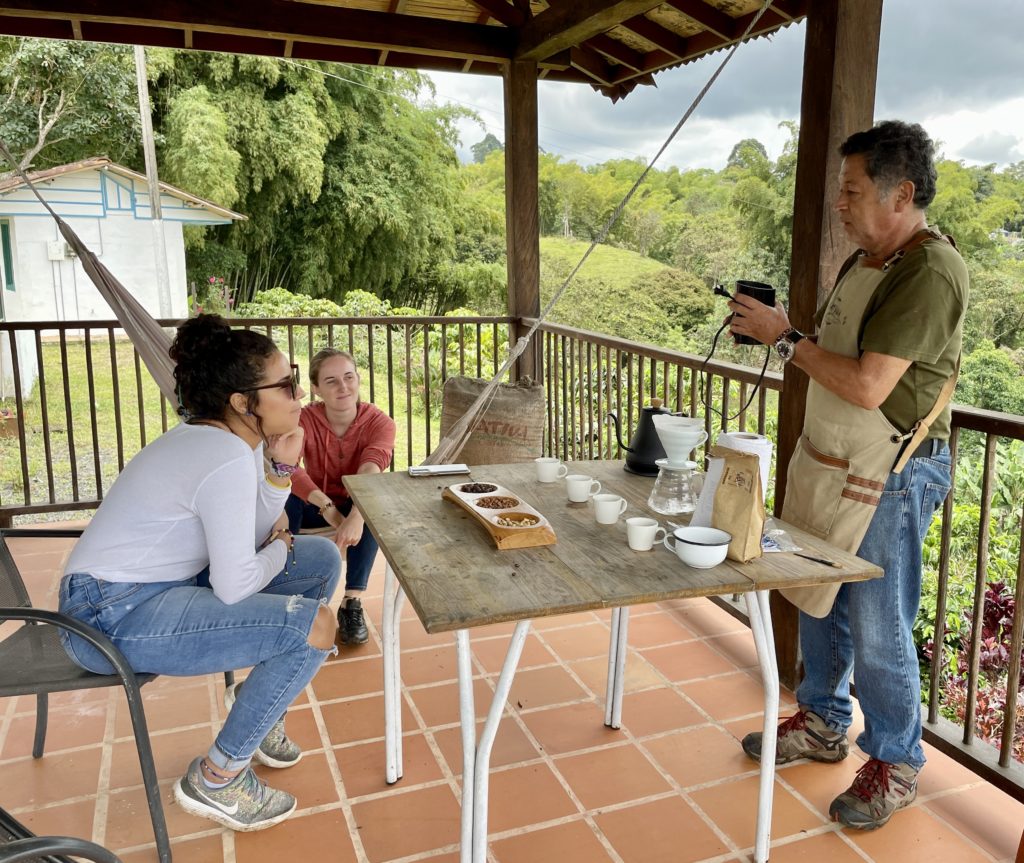

I admit, I’ve never been a coffee drinker. But I’m starting to really like it here in Colombia!

As we sipped on Colombia’s “liquid gold”, I remembered an earlier conversation I had in a coffee shop with Cristina Flores. She is well-known in the tiny pueblo of Pijao for managing a shop that only buys the finest selection of beans and coffee products from local families. I spent an afternoon in her shop chatting with some of the coffee workers from the community, trying desperately to understand their accent and what they had to say about the history and future of this region.

historically authentic coffee community.
What I learned from them, and what I have read, says that climate change, and its changing weather patterns, is really starting to impact this region. The temperatures are higher, the seasons of drought are longer, and when the rain comes, it falls in sheets increasing erosion and landslides.
An article on qz.com really put it into perspective for me:

“Forty-five Colombian Coffee farmers were asked questions that tapped into the farmers’ own conceptualization of climate change, such as “What is climate change?” and “How, if at all, has climate change affected you as a farmer?”
The results were stark.
Over 90% of the coffee farmers reported changes in average temperature. 74% said droughts had gotten longer and worse, and 61% reported an increase in mountainside erosion and landslides because of more rain.

The farmers also perceived impacts of these environmental changes on their crops. 91% reported changes in the flowering and fruiting cycles of the coffee plants. 75% had noticed an increase in pests, and 59% reported an increase in crop disease.“
Most producers sell their coffee to the Colombian National Coffee Federation, a nonprofit cooperative founded in 1927 to represent Colombia’s coffee farmers nationally and internationally. It values Colombia’s coffee exports using a price scale tied to the New York Stock Exchange. Since that price fluctuates daily, it is difficult to calculate an individual farmer’s exact income or losses, but most small farmers in Colombia barely break even.
Under such circumstances, even one crop failure can devastate the family farm.”
“Between 2008 and 2013, Colombia’s coffee production fell by around 33 percent, in large part due to the extreme El Niño and La Niña weather patterns, a period in which the number of rains, storms and droughts increased.” (Coffeehunter.com)

In the years since, farmers have been trying out new resistant tree varieties, as well as planting more bananas, avocados and limes to shade the coffee trees, stabilize the hillsides, and diversify their income. They’re also building rainwater collection tanks to weather the prolonged periods of drought and they are cutting forests at higher and higher elevations to increase their coffee acreage. 2019 was a good year for coffee farmers who produced 14.8 million bags of coffee- their highest yield ever. But production has been falling again since then to 13.9 and 12.6 million bags in 2020 and 2021 respectively. That’s a lot of coffee, but increasing prices, decreasing production, and a lack of youth who want to work as pickers for so little profit, are definitely long-term trends that are worrying to these farmers.

Before leaving our coffee tour, I asked Jairo what coffee drinkers could do to help Colombia. His answer: drink more Colombian coffee. Help preserve the heritage and the economy of these millions of small farmers. Demand organic and fair-trade to preserve Colombia’s environment. He assured me that when we vote with our dollar and our selection, the growers of Colombia are listening.
So, take a tip from Colombians. Pull up a chair- at any time of the day – and enjoy a cup of the best!






Thanks to Leah, Maria and Scott for helping me enjoy the wonders of Colombia’s Coffee Region!

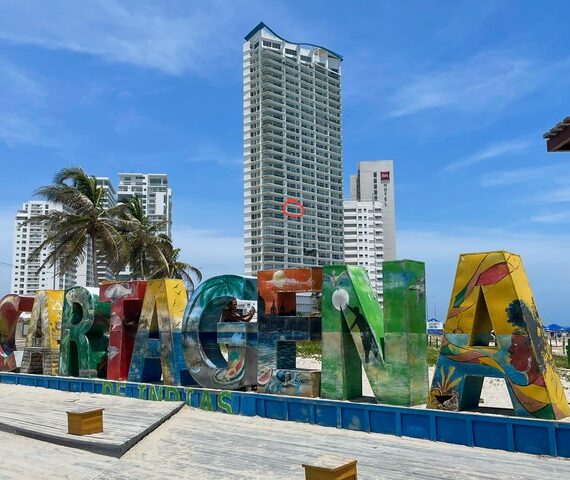
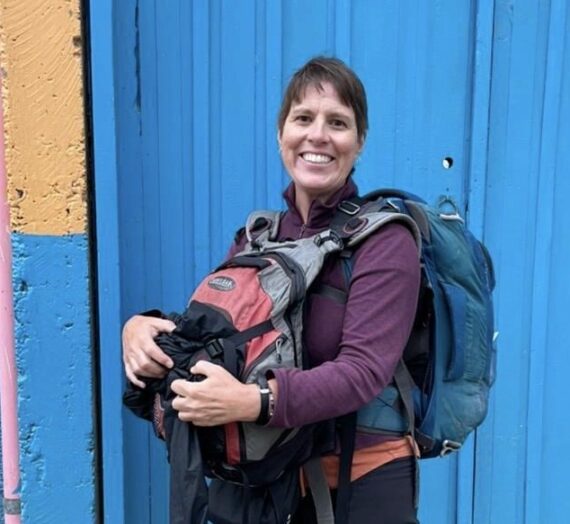
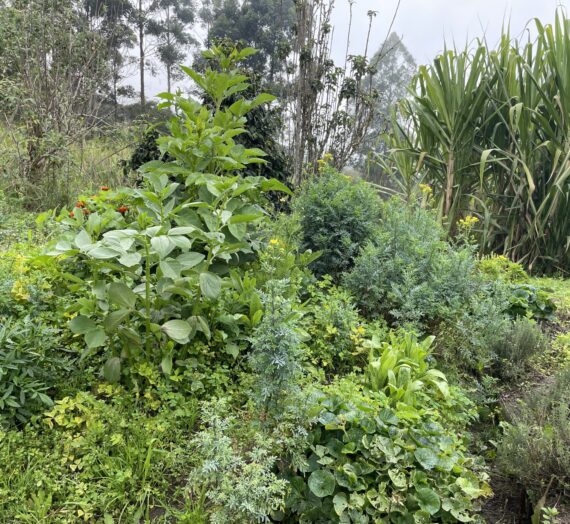
Tracey
Wow! From beautiful photos to the description of coffee production – quite a post. It was well-timed for me, I recently listened to Michael Pollan’s Caffeine on audible. He also described the hand-based picking and low wages to produce the largest drug addiction in the US…..very interesting.
Thank you for sharing your wonderful photos and stories.
Scott
Finally got to read this. Nice writeup! Glad I got to join you for a little while.